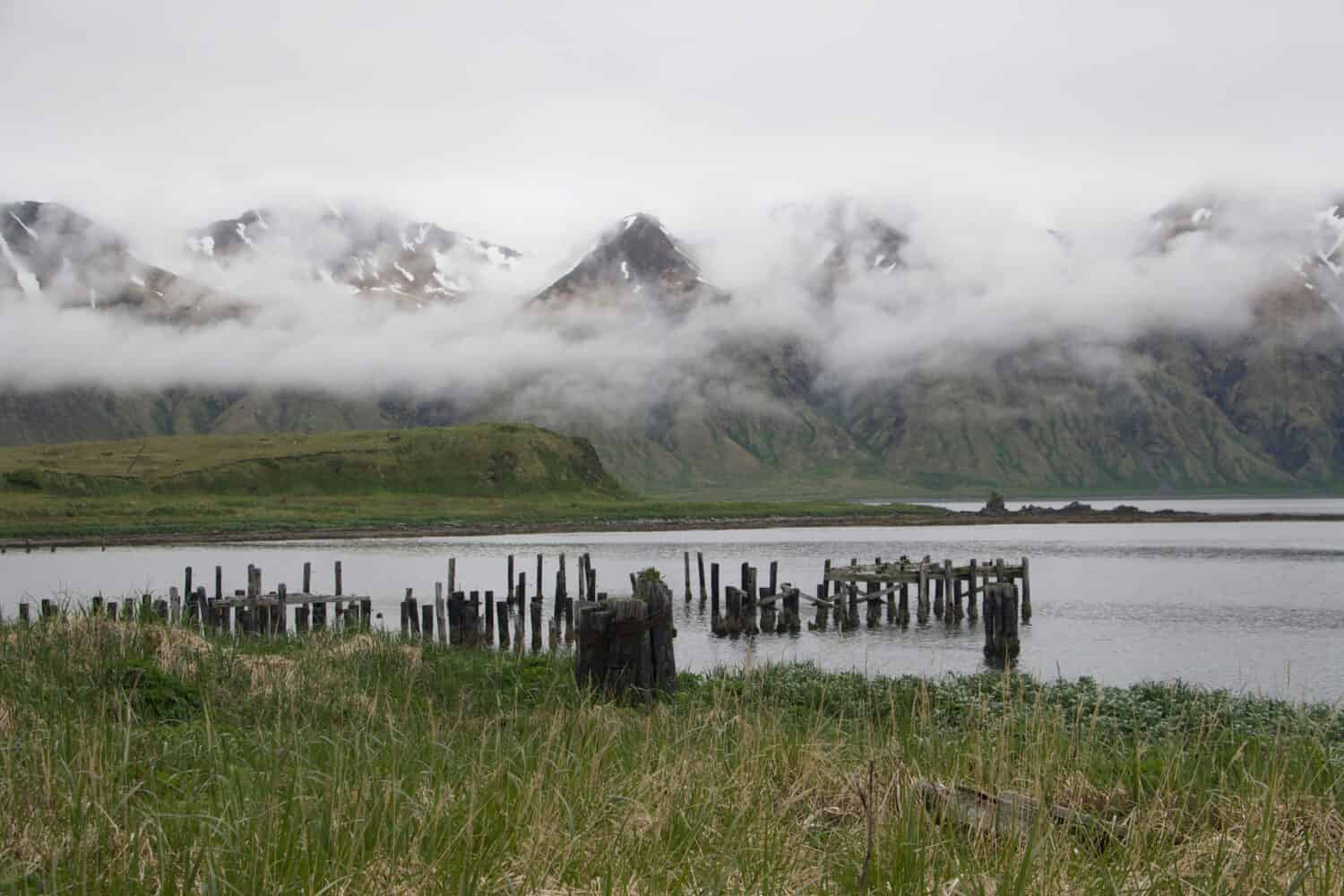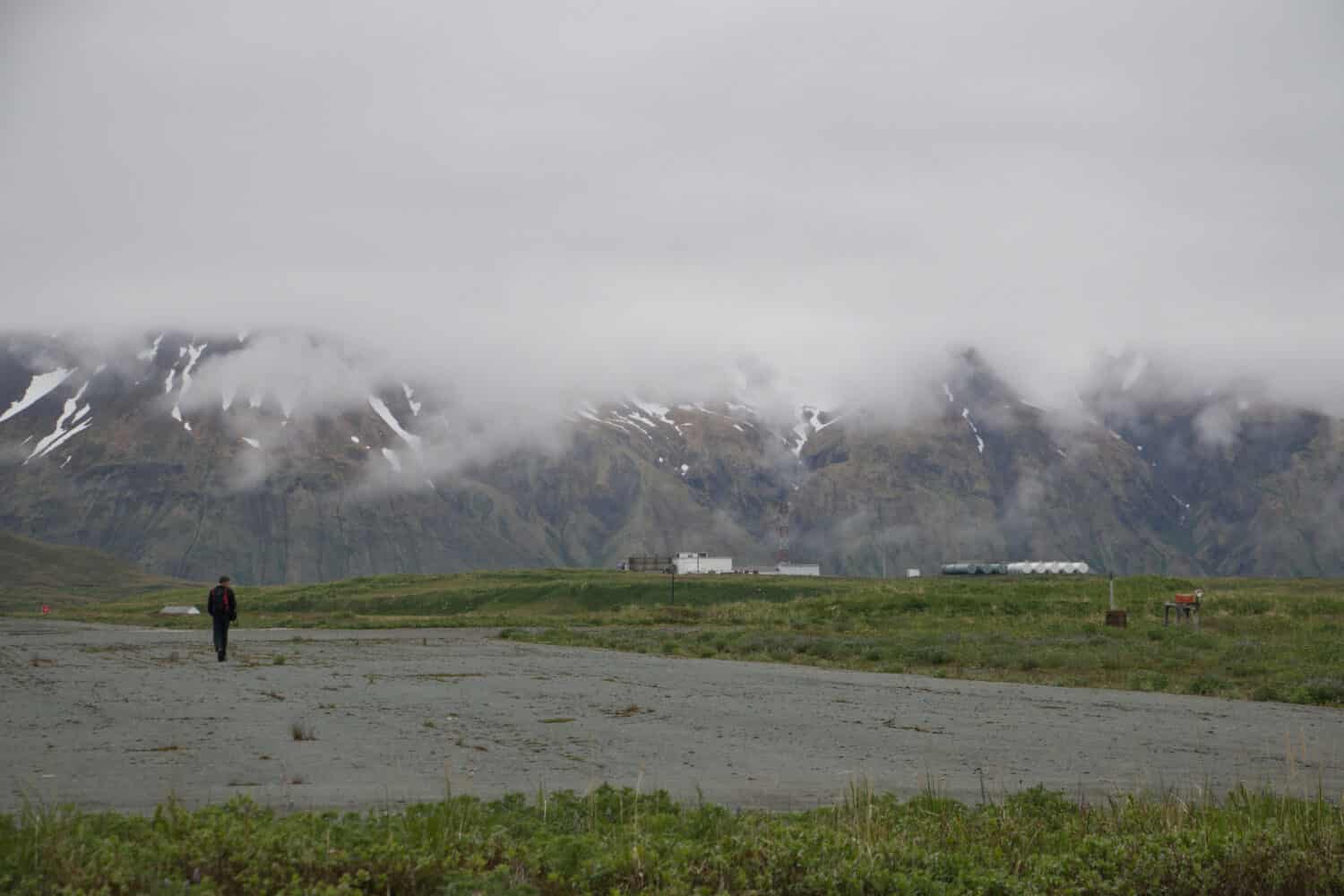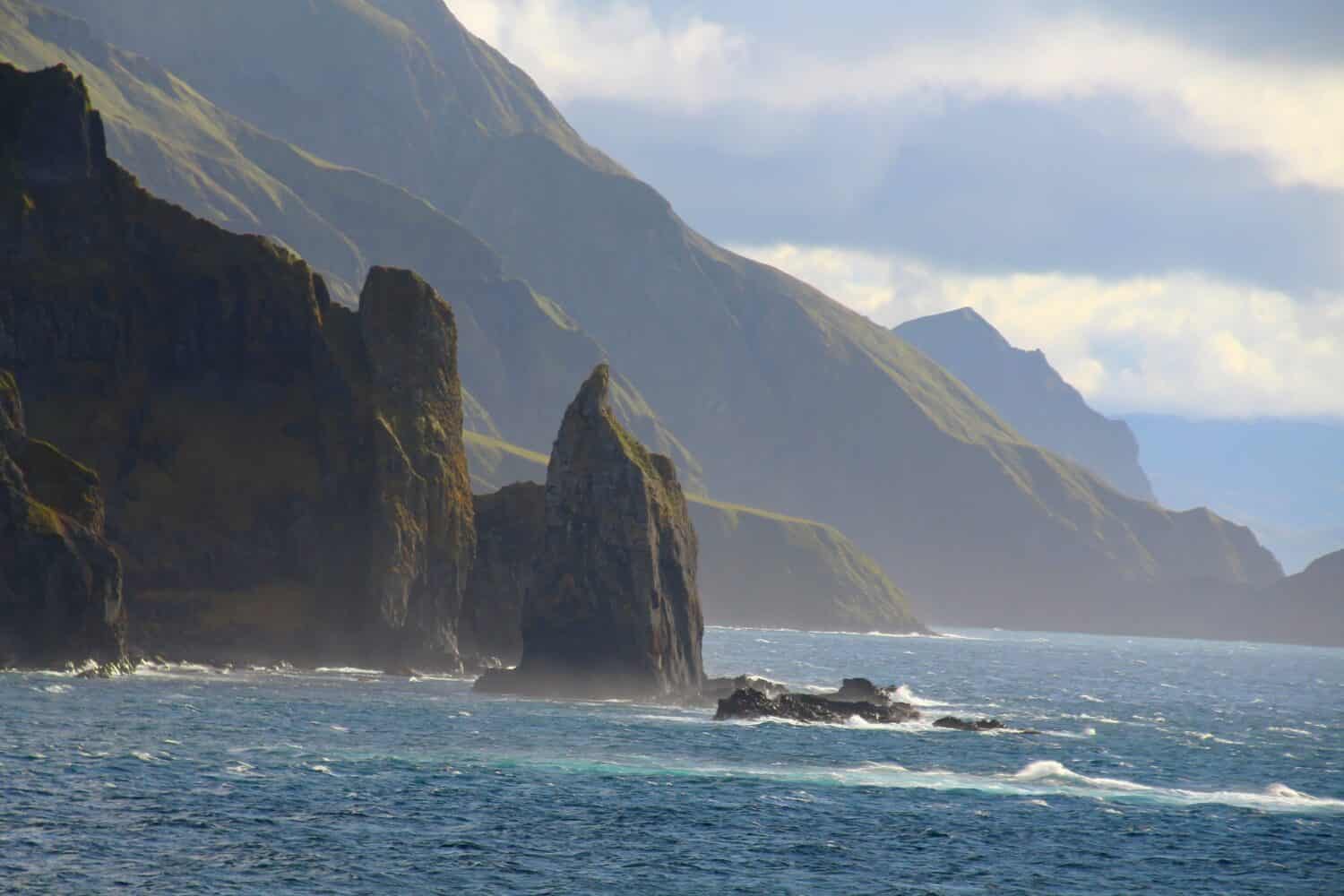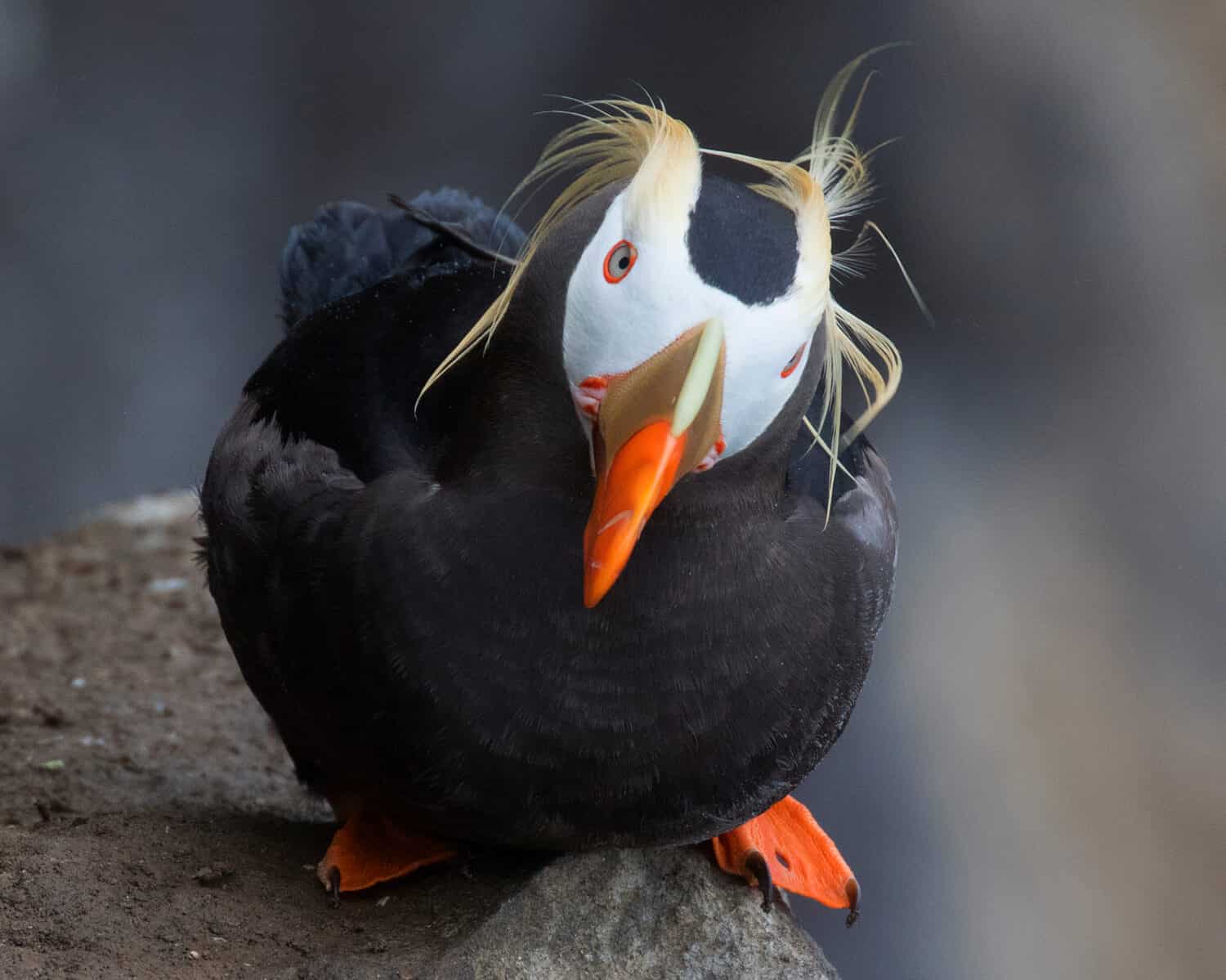At the furthest point you can travel west and still be in the United States lies the island of Attu. Attu is Alaska’s largest uninhabited island. It’s even further west from the U.S. than the Hawaiian Islands.
Attu was once a tiny, remote village inhabited by Aleut Unangan natives, an ancient race of maritime people who settled in the Aleutian islands around 7,000 years ago. Most recently it was populated by the U.S. Coast Guard living at the Casco Cove Coast Guard Station. But the station closed in 2010, making Attu the largest uninhabited island in Alaska.
The story of how and why Attu became a deserted island is a tragic one.
The History of Attu Island: The Aleut Unangan Residents

Massacre Bay is an inlet on the coast of Attu and a landing site for U.S. troops recapturing the island from the Japanese.
©Kerrin Ingwersen/Shutterstock.com
Attu is the westernmost island among Alaska’s Aleutian Islands. The Aluet people, also called Unangan, lived in villages along the islands. Unanga means “the original people.” The Aleut Unangan relied on the sea for survival and hunted sea otters, whales, sea lions, and seals. They also dieted on fish, birds, berries, and mollusks.
As of 1942, 44 people lived peacefully in the village on Attu Island. But the peace would not remain. The Aleutian Islands were a strategic location in World War II. To prevent the U.S. from building military air bases on the islands, the Japanese invaded the Aleutian Islands, including Attu, in June 1942. It was just six months after the bombing of Pearl Harbor.
Although other villages in the Aleutian Islands had been evacuated by the U.S. government, the people of Attu had not. All 44 residents of the island were taken hostage by the Japanese.
The Attuans were transported to Japan as prisoners. Nearly half of them died due to poor living conditions and malnutrition. After the war, the Attuans could not return to their home. Their village had been destroyed when the U.S. military retook the islands from the Japanese.
Attu Island remained inhabited only by U.S. Coast Guard personnel, until 2010, when they closed the station and left the island.
Return to Attu Island

The weather on Attu Island is often overcast and foggy.
©Kerrin Ingwersen/Shutterstock.com
The Attuans spread out after their return from Japan. Some went to live on the nearby island of Atka. Others settled in the Pacific Northwest. But none of the Attuans or their descendants had ever made the trip back to see their homeland.
That is, until 2018 when 11 Attu descendents took the long journey by boat to visit their ancestral home for the first time. While there, they visited the original site of the village, sitting in a protected cove surrounded by mountains. All evidence of the village is gone, except for the foundation of an old Russian Orthodox church.
Where is Attu Island on a Map?
It’s as west as you can be in the U.S. Attu Island is 1,100 miles from mainland Alaska. It’s so far west that it’s in the eastern hemisphere. The small island, only 20 by 35 miles wide, is the far westernmost of the Aleutian Islands.
How Did the Aleutian Islands Form?

Seen here is Unalaska, a volcanic island in the Fox Islands group of the Aleutian Islands.
©jet 67/Shutterstock.com
The islands were formed by volcanic activity in the Early Eocene era that occurred along a fissure between Alaska and Japan. Known as the “Ring of Fire,” Attu Island is in a region of frequent volcanic activity. However, there is no active volcano on Attu Island.
What Wildlife Lurks on Alaska’s Largest Uninhabited Island?

Tufted puffins are migrating seabirds that come to shore in Alaska during summer to nest and raise chicks.
©rbrown10/Shutterstock.com
Attu is a cloudy and rainy place, with very few sunny days. If it’s not raining, it’s likely to be overcast and foggy. Summers stay cool, with average highs in the 50s from July through September.
Due to the cool average temperatures, you won’t find established trees on Attu Island. The land is full of lush green tundra and covered with wildflowers in the summer. The mammals on the island, introduced by humans, include reindeer, caribou, and foxes.
Attu used to be a popular destination for birding tours. However, once the U.S. Coast Guard station closed, it became increasingly difficult to reach. Today, the island is only accessible via boat on a two-week tour that starts from Adak Island.
Some of the rare birds you may encounter include:
- Laysan albatross
- Tufted puffin
- Aleutian cackling goose
- Cormorant
- Auklet
- Lapland longspur
- Thick-billed murres
- Giant song sparrows
- Northern fulmar
Alaska Maritime National Wildlife Refuge
Attu Island is a part of the larger Alaska Maritime National Wildlife Refuge. The 4.9 million acre refuge extends from southeast Alaska to the Arctic Ocean and includes over 2,500 islands. The refuge provides habitat for more than 30 species of seabirds and many marine animals.

Steller sea lions, living on the Aleutian Islands, are much larger than California Sea Lions. Males can weigh as much as 2,500 pounds.
©NatureDiver/Shutterstock.com
On the beaches live Steller sea lions, northern sea otters, and harbor seals. Living in the water are salmon, porpoises, halibut, cod, rockfish, king crab, sperm whales, and killer whales. Many of the species of animals found in the Alaska Maritime National Wildlife Refuge can’t be found anywhere else on the planet.
The photo featured at the top of this post is © Kerrin Ingwersen/Shutterstock.com
Thank you for reading! Have some feedback for us? Contact the AZ Animals editorial team.






